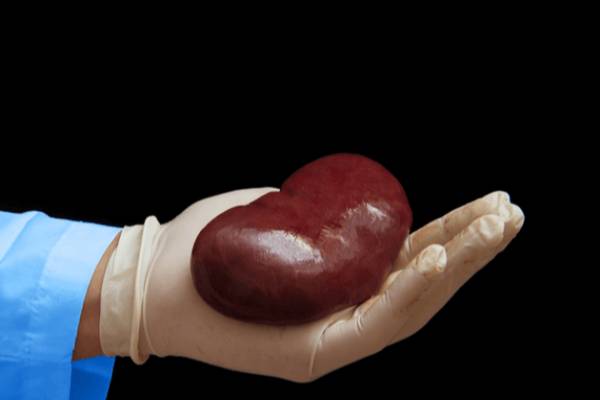Table of Contents
A Kidney transplantation in Iran is the most promising treatment for those with kidney malfunction who have undergone all possible treatments and end up seeking permanent ones. The major problem with kidney transplants is the demand for kidneys.
Kidney transplants are obtained through three main sources:
- Donation through relatives or individuals who consent to donation willingly.
- Transplants purchased from non-relatives or transplants that are donated in terms of altruism at no cost.
- Donated transplants from individuals with brain death.
Kidney Transplantation Waiting List
Over the past few years, the waiting time for finding a donor transplant in Iran has decreased. Factors such as age, gender, and geographical location are effective during the waiting time for kidney transplantation. So that the waiting time is shorter for younger adults than other patients.
Also, women are less likely to receive transplants than men because women’s health needs in the family are more considered. Young adults are more likely to have kidney transplants with related donors, while older people are less interested in treating kidney-related problems. But women are more obsessed with their treatment.
Purchased transplants (living kidney donation) are the most common type of kidney transplant. According to most statistics, kidney transplants performed in Iran were performed through living donors. Currently, 50% of people with kidney malfunction in Iran live with transplanted kidneys. In previous years, the number of kidney transplants was 100 per year, reaching 1,800 transplants per year over the next few years.
But in recent years, kidney transplants have reached 2,700 transplants per year.

Kidney Disease Risk Factors: Age and Sex
Kidney transplantation is more economical compared to dialysis. Several years ago, patients with kidney diseases were evaluated for renal transplantation status. The mean age of these patients was 32 years. Currently, people’s age is recognized as an important risk factor for mortality.
In this study, a gender-based survey of subjects showed that more than two-thirds of the patients were men, which was relatively high. One of the most important reasons for observing the factors of age and sex in the incidence of kidney disease is that men being more prone to kidney disease than women.
In other words, men exposed to the causes of kidney problems are more vulnerable. Also, because men have busy lives, they are less inclined to their health. In this study, it was found that about 71% of donated kidneys were through blood-unrelated individuals (with or without financial fee and for altruism) and about 19% through blood-related people (family and relatives).
Scientifically, a kidney transplant from a living donor is more desirable than one from deceased or unrelated individuals to the recipient, especially when the donor is from the recipient’s blood relatives. As the statistics show, about 14% of the transplants performed were from deceased donors, which indicates the lack of progress in kidney donation through the deceased, and unlike the technology available in Iran, most kidney transplants were purchased.
The first kidney transplant was performed through a deceased donor, 16 years after the first kidney transplant through a living donor, which still affects the choice of type of kidney transplant donor. But now the number of transplants donated through the deceased has increased compared to the living.
Also, the waiting time for kidney transplantation in villages is much longer than in cities due to unfavorable economic conditions and the lack of access to educational centers in the villages. The cost of kidney transplantation in Iran is lower than in other countries. The health insurance system often covers the treatment fees.
Kidney transplantation in Iran is available to everyone, regardless of the economic situation of applicants, due to the low cost and acceptance of payment of treatment costs by the insurance company. Therefore, candidates for kidney transplantation with a low economic situation are also eligible for kidney transplantation.
If the kidney transplant is successful, the need for kidney dialysis is eliminated and the patient’s quality of life is improved. Kidney transplantation from brain death donors is in short supply and will take a long time to find. Therefore, the medical community is more interested in transplanting all donations through a living donor.
Kidney Transplantation in Iran is affordable
The overall cost of kidney transplantation is about $9,300, of which 65% and about $6,000 are spent on immunosuppressive therapy, 22% and about $2,000 for transplantation, and 12% and about $1,100 on providing the donated kidneys.
The cost of removing a donor’s kidney is as follows:
- Staff $183
- Accommodation $107
- Medicine $39
- Paraclinical $23
- Other partial costs $22
The cost of surgery for the transplant recipient is as follows:
- Staff $331
- Medicine $367
- Paraclinical $278
- Accommodation $475
- Other partial costs $222
All prices listed are approximate and costs mainly depend on the currency of the applied countries and may vary. With the increasing incidence of kidney failure leading to advanced kidney disease, kidney transplant treatment is on the rise worldwide. According to an analytical study, patients undergoing kidney transplantation in an Iranian hospital were evaluated in terms of age, gender, place of residence, source of kidney received, and waiting time for transplantation.
As a result of this assessment, of 228 patients, about 73% were male and about 27% were female. The average waiting time for kidney transplantation was 386 days and the mean age of the patients was 22 years. The level of kidney donation was 66.2% of the living and 14% of the deceased people, which are the lowest and most common sources of kidney transplantation.
According to this estimate, about 51% of transplanted kidneys have been purchased.
Payment of Kidney Transplant Costs by the Insurance Company
The insurance company can pay up to 80 percent of the costs associated with pre-transplant evaluation, post-transplant care, and repressive drugs to improve kidney transplantation. The same applies to private and public insurance policies, and they also pay a portion of the costs. However, the costs paid by the insurance may only cover a limited portion of the cost of kidney transplantation, and in other parts, the fee will be paid by the recipient.
It should be noted that to get the best results from a kidney transplant, you should refer to a reputable center. Amitis Med Tour Health Tourism Company is available to provide kidney transplantation services from the beginning to the end and will accompany in receiving the ideal result with the presence of experts.

Cost of Kidney Transplantation in Iran Compared to Other Countries
- It is $442,500 in the USA
- $90,000 in Europe
- $20,000 in Turkey
- And $17,000 in India.
All prices listed are approximate and costs depend mainly on the currency of the applied countries and may vary.
Separate Kidney Transplant Costs
The cost of kidney transplantation does not include the costs of examinations and you have to pay a fee other than the transplantation cost. The cost of preoperative diagnosis varies in different medical centers. So you can have a preoperative diagnosis in your city and complete the rest of the procedure in hospitals in other cities.
After a thorough kidney donor examination, your doctor will order a kidney transplant, which can take two to three weeks. In the first two weeks, the donor will be examined and the results of the tests will be determined in the third week. Tests taken from your donor are not included in the overall transplant wages and are paid separately.
Preventive or Early Kidney Transplant
If a kidney transplant is performed before the onset of dialysis, it is called a preventive transplant and is generally performed to prevent needing dialysis. In other cases, after renal failure and several stages of dialysis, kidney transplantation is performed as an early transplant. Both methods have their benefits.
According to some researches, performing preventive and early kidney transplantation, which is done in a short period without dialysis, causes long-term health of the recipient. It even allows people to work, save time and money, and improve their quality of life. In most cases, the elderly or people with special medical conditions such as diabetes can have a successful transplant.
But to understand the risks and deal with them, it is necessary to do or abandon some habits that can help reduce the risks and increase the success of the transplant. For example, your doctor may ask you to lose weight.




